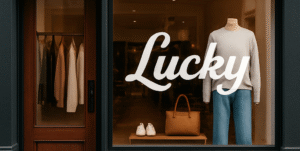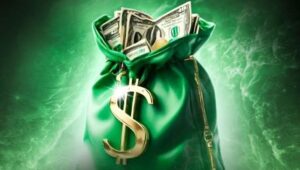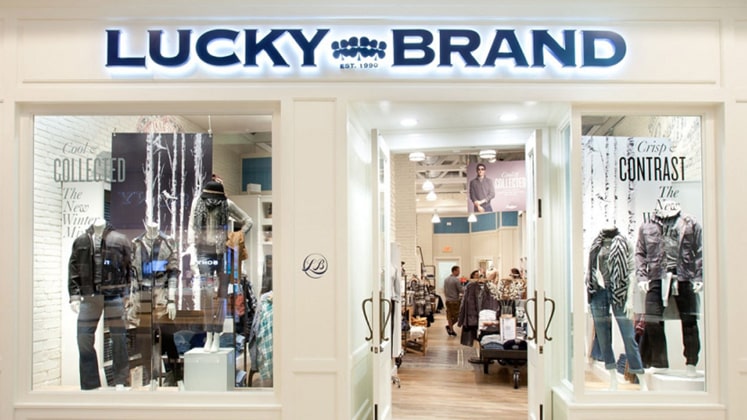Lucky Brand is an American denim company known for its design products inspired by American culture. Headquartered in Vernon, California, USA. It was founded in 1990 by Gene Montesano and Barry Pearlman. And our American Denim Company is known for clothing including jeans, denim shirts, shoes and jewelry. American Denim sells through retailers, and ours also sells online.
What is Lucky Branding?
Lucky Branding is more than just a catchy name or a pretty logo.
Lucky Branding is about creating an identity that feels natural, memorable and emotionally appealing. It’s the kind of branding that makes people say, “I don’t know why, but I like this brand.”

Lucky Branding” Why Names Matter
Names have power. Just like wearing your “lucky shirt” before a big event boosts confidence, lucky branding gives your business a sense of positivity and charm. When people hear your brand name, they should feel intrigued and connected.
The Psychology Behind Lucky Branding
“Lucky branding” means creating a brand in such a way that people associate it with good luck, positivity and success. This is often done using psychology, culture and emotions.
Here are some key points:
Colors and symbols – Many brands use colors such as red, gold or green because in different cultures they are considered lucky, prosperous and energetic.
Emotional association – When people feel that a “lucky brand” brand has brought them luck, they are more likely to trust it and remain loyal to it. This is why companies associate branding with positivity, hope or success.
Cultural beliefs – Brands often adapt to local beliefs. For example, jewellery brands use the idea of good luck and prosperity during Diwali or Akshaya Tritiya promotions.
Rarity and exclusivity – Limited editions or “special lucky offers” give customers the feeling that they are getting something rare and lucky.
Elements that make a brand “lucky”
A “lucky” brand doesn’t just happen—it’s made—it’s designed.
Lucky brands are different from ours and all other brands.
Lucky brands can create a sense of luck through elements such as symbolic images in their logos (e.g., a four-leaf clover or horseshoe), colors associated with prosperity and good luck (e.g., gold or green), and a positive and confident brand voice. Additionally, a strong brand identity, clear values, and a well-defined brand story can foster a sense of trust and positive associations, making the brand seem lucky and trustworthy to consumers.
Lucky colors – Using colors such as red, gold, green, or blue that symbolize prosperity, positivity, and good luck is what our lucky brand is all about.
Numbers – Using “lucky numbers” (e.g., 7, 8, or 108) in lucky brand names, product volumes, or pricing strategies (₹999, $8.88, etc.) Names and Words – Choosing brand or product names that sound positive, auspicious or promising (e.g., “luck”, “prosperity”, “lucky star”).
Cultural Alignment – Connecting to local beliefs, festivals or traditions where luck is important (Diwali, Chinese New Year, St. Patrick’s Day, etc.).
Positive Storytelling – Stories that inspire hope, success, happiness or prosperity, making the brand feel like a partner in good luck.
Exclusivity and Limited Editions – Offering special “lucky” editions, gifts or promotions that sound rare and fortuitous.
Emotional Connection – Convincing customers that the brand brings confidence, success or blessings to their lives.

Storytelling: The Core of Lucky Branding
Every Lucky brand has a story. Think Apple’s beginnings in a garage or Nike’s “Just Do It” spirit. Stories connect people to brands the same way a campfire tale connects listeners to the storyteller. Your story humanizes your brand.
Create an emotional connection with customers
People don’t just buy products; they buy emotions. Lucky branding means creating emotions like trust, joy or excitement every time someone interacts with your brand. It’s like giving them a lucky charm they’ll want to keep.
Consistency: The Invisible Charm of Branding
Imagine if Coca-Cola suddenly changed its logo every year. A little confusing, right? Lucky branding only works when your message, tone, and visuals are consistent. Consistency is what makes your brand credible and trustworthy.
Consistency in branding means keeping your brand’s look, tone, message, and feel consistent across all platforms—whether it’s your logo, website, social media, packaging, or customer service.
It works like an “invisible charm” because customers can’t see it directly, but they feel the trust and familiarity it creates.
Why is consistency effective in branding?
Builds trust – When a brand looks and sounds the same everywhere, people perceive it as credible and professional.
Builds recognition – Seeing the same logo, colors, and tone over and over again helps customers instantly recognize your brand (like Coca-Cola’s red or Apple’s minimalist design).
Strengthens emotional bonds – Consistency in storytelling and values connects customers emotionally, convincing them that the brand really stands for something.
Increases loyalty – Customers prefer brands they know well. Consistent branding reduces confusion and increases long-term loyalty.
Increases professionalism – A brand that communicates consistently shows consistency and credibility in the marketplace.
Visual Identity-Colors, Logos, and First Impressions
First impressions matter. Your logo, colors, and fonts create instant perceptions.
For example:
Green often represents growth and luck.
Red creates excitement and urgency.
Blue builds trust.
A strong visual identity makes your brand recognizable at a glance.
Visual identity: colors, logos and first impressions
Visual identity: colors, logos and first impressions
Visual identity is the way a brand presents itself through design elements such as colors, logos, typography and style. It’s the first thing people notice, and it shapes their feelings about the brand.
Colors
Colors evoke emotions and associations.
Examples: red = energy and excitement, blue = trust and professionalism, green = nature and growth, gold = luxury and success.
A brand’s color palette helps to build identity and create the right atmosphere.
Logo
A logo is the face of the brand.
It should be simple, memorable and meaningful.
Examples: Nike’s swoosh = speed and dynamism, Apple’s logo = simplicity and innovation.
First impressions
People form an opinion about a brand in a matter of seconds.
The combination of logos, colors, and design creates an instant impact—whether the brand feels modern, authentic, stylish, or playful.
How Social Media Boosts Lucky Branding
Social media is one platform where lucky branding shines the most. Be it Instagram reels, TikTok trends or Facebook posts, these platforms give you a chance to showcase your personality, engage with followers and spread your brand’s buzz.

Lucky Branding in Small Businesses
Small businesses can benefit greatly from Lucky Branding. You don’t need a massive budget—just creativity, authenticity, and consistency. Think of your small business as a neighborhood’s lucky café that everyone loves visiting.
Common mistakes that spoil your luck
Not every brand is perfect.
Copying others
Using complex logos
Giving inconsistent messages
Ignoring customer feedback
Avoiding these will keep your brand’s luck shining.
Make your brand of good quality by avoiding all these things
Case studies: Famous examples of lucky branding
Apple: minimalist design, emotional story.
Starbucks: consistent identity, customer experience.
Airbnb: sense of belonging and community.
These brands don’t just sell products—they sell emotions, experiences, and dreams.
Practical steps to create your own lucky branding
Define your brand values.
Choose a memorable name and logo.
Create a story that people will love.
Maintain consistency across platforms.
Listen to your audience and grow.
How to know if your branding is working
Signs of successful lucky branding include:
Customers recommend your brand.
People remember your logo or tagline.
Emotional connections form over time.
Increased trust and repeat purchases.
Conclusion
Lucky branding isn’t really based on chance—it’s about creating a brand that’s so memorable, credible, and emotionally appealing that it feels like luck is always on your side. Whether you own a small business or manage a global company, lucky branding can be your secret to winning hearts and standing out from the crowd.
FAQ
Q .What does lucky branding mean in simple terms?
A.Lucky branding means creating a brand that feels memorable, positive, and emotionally connected with customers.
Q2. Can small businesses use lucky branding effectively?
A.Yes! Small businesses can shine by being authentic, consistent, and telling their own unique story.
Q. Is lucky branding just about a good logo?
A.No, it’s much more than that. The logo is a part of it, but lucky branding also involves storytelling, consistency, and emotional connection.
Q. How do I know if my brand has lucky branding?
A.If people remember you easily, recommend you to others, and feel good interacting with your business, you’re doing just fine.
Q. What is the future of lucky branding?
A.The future is in the digital space, where brands will use AI, personalization, and immersive technology to create even stronger emotional bonds.

